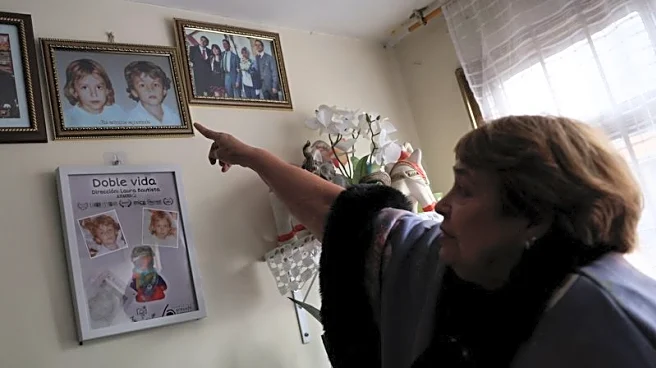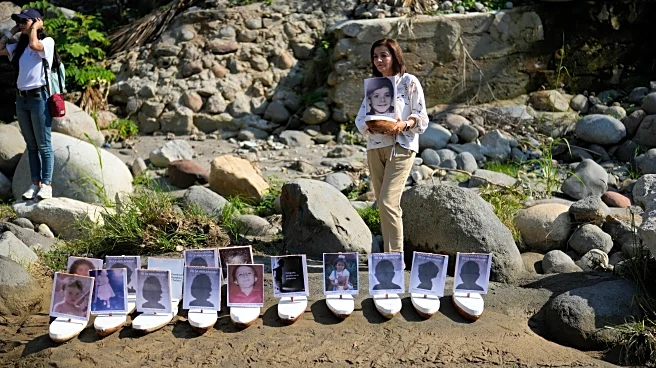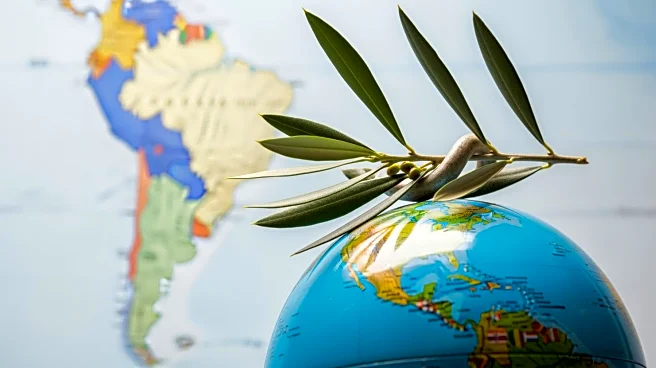By Nelson Bocanegra
BOGOTA (Reuters) -Maria Gladys Primo cannot hold back tears as she recalls the night of November 13, 1985, when she last saw her two young children, before a landslide of mud, rocks
and trees triggered by the eruption of Colombia’s Nevado del Ruiz volcano swept away her home.
Primo spent two days trapped in debris before a helicopter rescued her. Her husband was buried and never recovered.
She never believed her children died – and time may have proven her right.
The massive landslide that shattered Primo’s life also wiped out the town of Armero, killing about 25,000 people – nearly 70% of its population – in what is considered Latin America’s deadliest twentieth-century natural disaster.
Primo, who spent 18 months in a Bogota hospital recovering from severe injuries, is among the families who may have suffered a double tragedy: losing their loved ones and homes, and the possible irregular adoption of surviving children separated from relatives amid the chaos.
The Creating Armero Foundation - whose mission is to help survivors of the tragedy - has said that 583 children were reported missing after the landslide, and that some 150 were rescued alive.
The foundation has taken DNA samples from 71 adoptees, most of them adopted by foreign parents in what the organization has said were irregular processes.
“My heart tells me they are alive, both the girl and the boy, and I will keep waiting for them until the day I die,” Primo said of Jesus Manuel and Nuria Isabel, aged seven and six at the time.
She has some evidence for her hope: years after the tragedy, Primo recognized her son covered in mud in a television archive image showing him being rescued. But despite exhaustive searches, no agency has given her answers about him or his sister, whose birthday was the day after the disaster.
“The biggest wound Armero has is the issue of the lost children,” said Francisco Gonzalez, who lost his father and brother and later founded Creating Armero. “A parent will never stop looking for a child, especially knowing they were identified alive on TV or there is evidence.”
Only four reunions between adoptees and their parents have occurred so far, Gonzalez said.
“We need more relatives to provide DNA and more adoptees to come forward so we can cross-match and have more reunions,” Gonzalez said, adding there are many Colombian adoptees in countries like the Netherlands, Sweden, Denmark, Canada and the United States. "Any child adopted in late 1985 or 1986 could be from Armero.”
Many surviving parents have died over the decades, he added, but left DNA samples.
Authorities have been criticized for poor record-keeping by agencies like the Colombian Family Welfare Institute (ICBF), which families say withheld information for decades, complicating efforts to trace children.
Last month, the ICBF said it had begun restoring and digitizing records about the rescued children in an effort to trace them.
Primo remains committed.
“I never lose faith that they are alive, that one day we will meet again,” she said.
(Reporting by Nelson Bocanegra in Bogota; Editing by Julia Symmes Cobb and Matthew Lewis)













